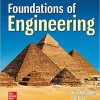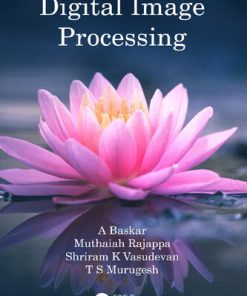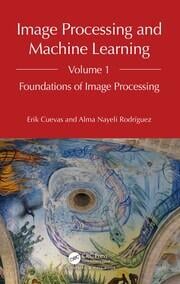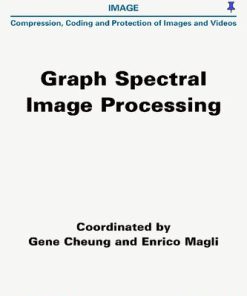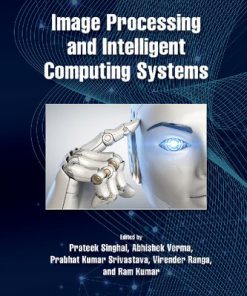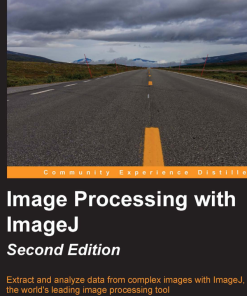Microscope Image Processing 2nd Edition by Fatima Merchant, Kenneth Castleman ISBN 9780128210499 0128210494
$50.00 Original price was: $50.00.$25.00Current price is: $25.00.
Microscope Image Processing 2nd Edition by Fatima Merchant, Kenneth Castleman – Ebook PDF Instant Download/Delivery: 9780128210499 ,0128210494
Full download Microscope Image Processing 2nd Edition after payment
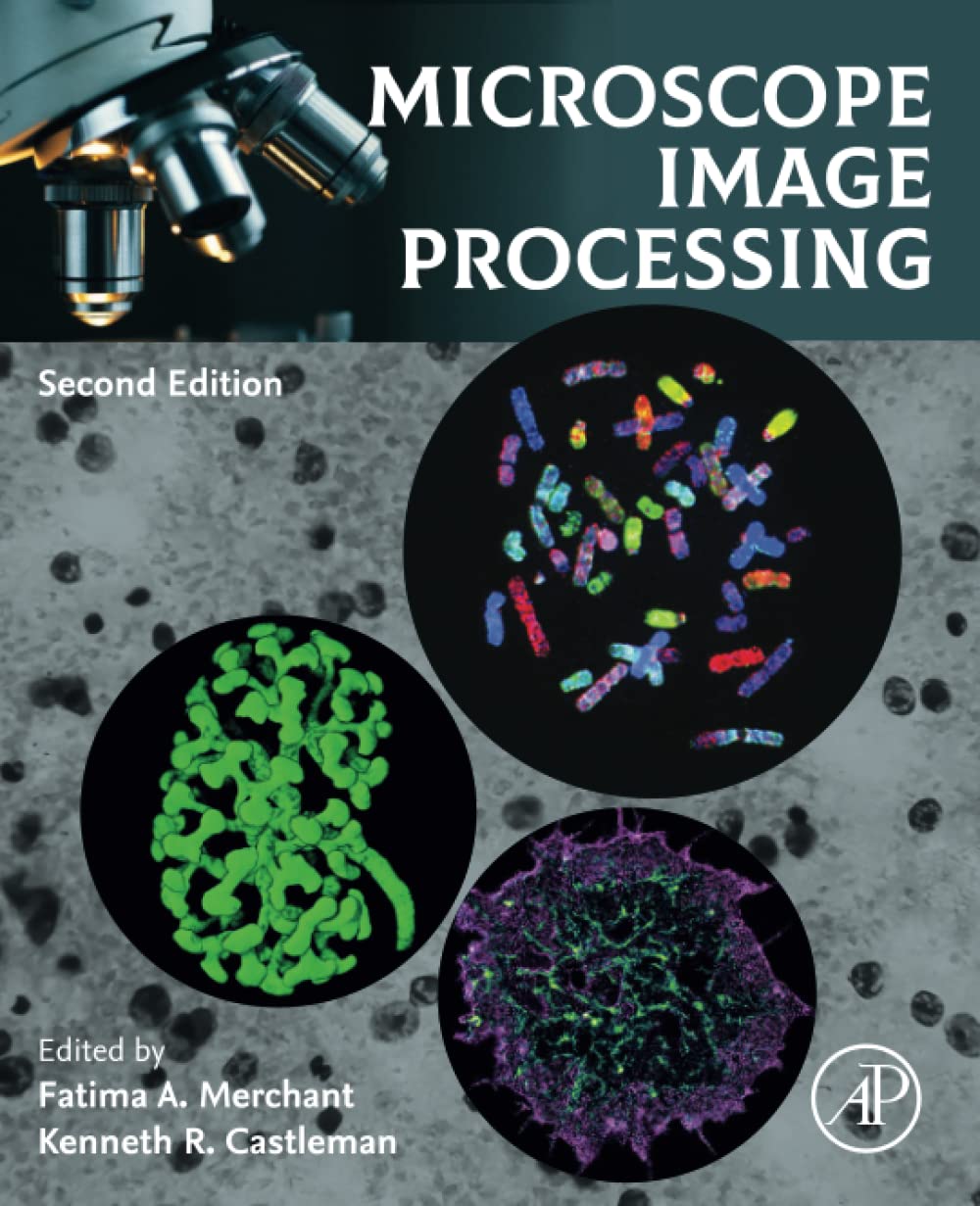
Product details:
ISBN 10: 0128210494
ISBN 13: 9780128210499
Author: Fatima Merchant, Kenneth Castleman
Microscope Image Processing, Second Edition, introduces the basic fundamentals of image formation in microscopy including the importance of image digitization and display, which are key to quality visualization. Image processing and analysis are discussed in detail to provide readers with the tools necessary to improve the visual quality of images, and to extract quantitative information. Basic techniques such as image enhancement, filtering, segmentation, object measurement, and pattern recognition cover concepts integral to image processing. In addition, chapters on specific modern microscopy techniques such as fluorescence imaging, multispectral imaging, three-dimensional imaging and time-lapse imaging, introduce these key areas with emphasis on the differences among the various techniques.
The new edition discusses recent developments in microscopy such as light sheet microscopy, digital microscopy, whole slide imaging, and the use of deep learning techniques for image segmentation and analysis with big data image informatics and management.
Microscope Image Processing, Second Edition, is suitable for engineers, scientists, clinicians, post-graduate fellows and graduate students working in bioengineering, biomedical engineering, biology, medicine, chemistry, pharmacology and related fields, who use microscopes in their work and would like to understand the methodologies and capabilities of the latest digital image processing techniques or desire to develop their own image processing algorithms and software for specific applications.
- Presents a unique practical perspective of state-of-the-art microscope image processing and the development of specialized algorithms
- Each chapter includes in-depth analysis of methods coupled with the results of specific real-world experiments
- Co-edited by Kenneth R. Castleman, world-renowned pioneer in digital image processing and author of two seminal textbooks on the subject
Microscope Image Processing 2nd Edition Table of contents:
Chapter One: Introduction
Abstract
1.1: The Microscope and Image Processing
1.2: The Scope of This Book
1.3: Our Approach
1.4: The Challenge
1.5: Modern Microscopy
1.6: Nomenclature
1.7: Summary of Important Points
References
Chapter Two: Fundamentals of Microscopy
Abstract
2.1: The Origins of the Microscope
2.2: Optical Imaging
2.3: Diffraction Limited Optical Systems
2.4: Incoherent Illumination
2.5: Coherent Illumination
2.6: Resolution
2.7: Aberration
2.8: Calibration
2.9: Summary of Important Points
References
Chapter Three: Image Digitization and Display
Abstract
3.1: Introduction
3.2: Digitizing Images
3.3: Overall System Design
3.4: Image Display
3.5: Summary of Important Points
References
Chapter Four: Geometric Transformations
Abstract
4.1: Introduction
4.2: Implementation
4.3: Gray Level Interpolation
4.4: The Spatial Transformation
4.5: Applications
4.6: Summary of Important Points
References
Chapter Five: Image Enhancement
Abstract
5.1: Introduction
5.2: Spatial Domain Enhancement Methods
5.3: Fourier Transform Methods
5.4: Wavelet Transform Methods
5.5: Color Image Enhancement
5.6: Summary of Important Points
References
Chapter Six: Morphological Image Processing
Abstract
6.1: Introduction
6.2: Binary Morphology
6.3: Grayscale Operations
6.4: Watershed Segmentation
6.5: Summary of Important Points
References
Chapter Seven: Image Segmentation
Abstract
7.1: Introduction
7.2: Region-Based Segmentation
7.3: Boundary-Based Segmentation
7.4: Summary of Important Points
References
Chapter Eight: Object Measurement
Abstract
8.1: Introduction
8.2: Measures for Binary Objects
8.3: Distance Measures
8.4: Gray Level Object Measures
8.5: Object Measurement Considerations
8.6: Summary of Important Points
References
Chapter Nine: Object Classification
Abstract
9.1: Introduction
9.2: The Classification Process
9.3: The Single-Feature, Two-Class Case
9.4: The Three-Feature, Three-Class Case
9.5: Classifier Performance
9.6: Bayes Risk
9.7: Relationships Among Bayes Classifiers
9.8: The Choice of a Classifier
9.9: Nonparametric Classifiers
9.10: Feature Selection
9.11: Neural Networks
9.12: Summary of Important Points
References
Chapter Ten: Multispectral Fluorescence Imaging
Abstract
10.1: Introduction
10.2: Basics of Fluorescence Imaging
10.3: Optics in Fluorescence Imaging
10.4: Limitations in Fluorescence Imaging
10.5: Image Corrections in Fluorescence Microscopy
10.6: Quantifying Fluorescence
10.7: Fluorescence Imaging Techniques
10.8: Summary of Important Points
References
Chapter Eleven: Three-Dimensional Imaging
Abstract
11.1: Introduction
11.2: Image Acquisition
11.3: 3D Image Data
11.4: Image Restoration and Deblurring
11.5: Image Fusion
11.6: Three-Dimensional Image Processing
11.7: Geometric Transformations
11.8: Pointwise Operations
11.9: Histogram Operations
11.10: Filtering
11.11: Morphological Operators
11.12: Segmentation
11.13: Comparing 3D Images
11.14: Registration
11.15: Object Measurements in 3D
11.16: 3D Image Display
11.17: Summary of Important Points
References
Chapter Twelve: Superresolution Image Processing
Abstract
12.1: Introduction
12.2: The Diffraction Limit
12.3: Deconvolution
12.4: Superresolution Imaging Techniques
12.5: Summary of Important Points
References
Chapter Thirteen: Localization Microscopy
Abstract
13.1: Introduction
13.2: Overcoming the Diffraction Limit
13.3: Localizing Molecular Position
13.4: Three-Dimensional Localization Microscopy
13.5: Quantitative Localization Microscopy
13.6: Implementation and Applications of SMLM
13.7: Summary of Important Points
References
Chapter Fourteen: Motion Tracking and Analysis
Abstract
14.1: Introduction
14.2: Image Acquisition
14.3: Image Preprocessing
14.4: Image Analysis
14.5: Trajectory Analysis
14.6: Sample Algorithms
14.7: Summary of Important Points
References
Chapter Fifteen: Deep Learning
Abstract
15.1: Introduction
15.2: Deep Learning Concepts
15.3: Practical Applications
15.4: Software Frameworks
15.5: Training Deep Learning Networks
15.6: Application of Deep Learning for Cell Nuclei Detection
15.7: Challenges
15.8: Summary of Important Points
References
Chapter Sixteen: Image Informatics
Abstract
16.1: Introduction
16.2: Open-source Software Ecosystems
16.3: Image Acquisition
16.4: Image Storage and Curation
16.5: Visualization
16.6: Community
16.7: Conclusion
16.8: Summary of Important Points
References
Glossary
Further reading
Index
People also search for Microscope Image Processing 2nd Edition:
microscope image processing software
microscope image processing pdf
microscope image processing book
microscope image definition
what is a photo microscope
Tags: Fatima Merchant, Kenneth Castleman, Microscope Image Processing
You may also like…
Computers - Hardware
Uncategorized
Uncategorized
Computers - Digital Photography
Uncategorized
Engineering
Graph Spectral Image Processing 1st Edition by Gene Cheung, Enrico Magli 1789450284 9781789450286
Computers - Computer Graphics & Design
Image Processing and Intelligent Computing Systems Prateek Singhal
Computers - Digital Photography

